How to Build Solar for Mikrotik|Mikrotik Solar Wireless P2P/P2MP and Its Applications
- Richard Wang
- December 27, 2024
- 8:14 pm

Preface
Network coverage in remote areas has never been an easy problem to solve. Backhaul networks in remote areas are not easy to build, and these remote areas often have no electricity supply. Mikrotik has many wireless backhaul products with multiple P2P and P2MP that can be used for network coverage in remote areas, but power will greatly become a bottleneck. Therefore, how to build solar for mikrotik solution, or mikrotik solar system, is the key to solving this problem. This article attempts to discuss how to build a solar system for mikrotik wireless P2P/P2MP solution from the perspective of the entire system architecture.
Table of Contents
1.Background of Wireless P2P/P2MP Technology
Wireless P2P/P2MP is widely used in rural internet connection coverage in some underdeveloped areas. Due to various factors such as low population density and high installation cost, traditional 4G LTE coverage or wired boardband coverage in rural areas have become unprofitable, thus hindering the progress of rural area Internet coverage. However, the use of wireless P2P/P2MP technology plus WIFI to provide rural area Internet coverage is widely used in rural areas such as Africa and Latin America because of its flexibility and low cost. Mikrotik’s wireless P2P/P2MP transmission equipment is very commonly used in various rural area coverage. However, in Africa and many underdeveloped areas, the power grid is either unstable or completely without power supply. At this time, it is necessary to consider how to power the system through a solar system.
2.Network Architecture and Challenge
2.1 Network Architecture
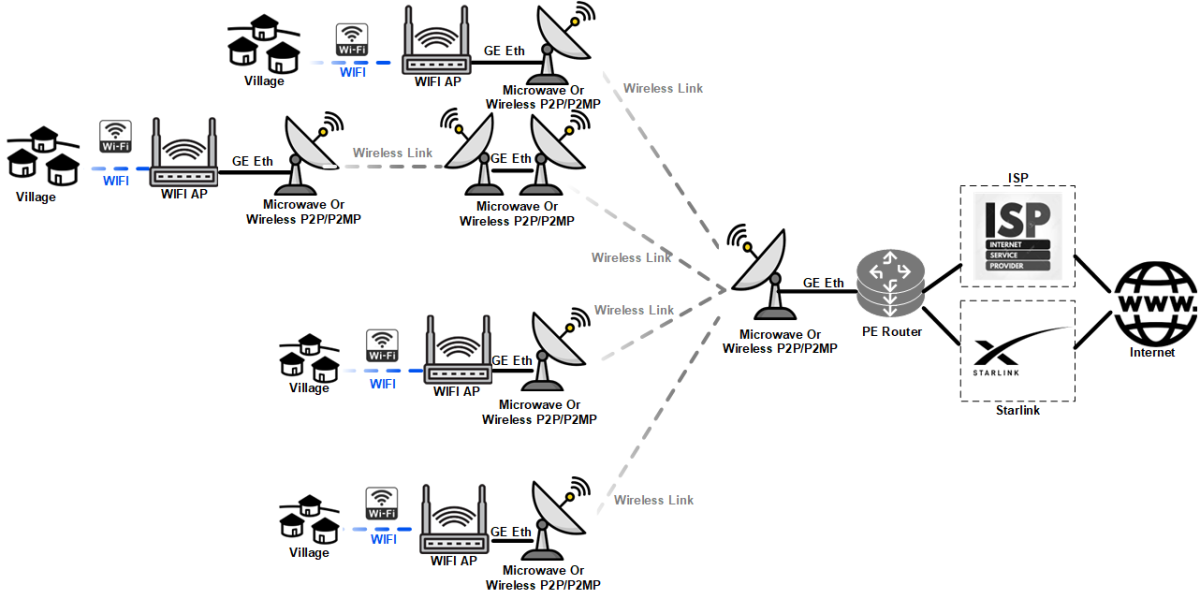
The above figure shows a network architecture that uses wireless P2P/P2MP and WIFI to implement rural Internet connection. This method will provide Internet Connection in Rural Areas at a lower cost than 4G small cell, This construction method is more suitable for remote villages in Africa and Latin America. In these areas, each village has a small population, and a village only needs a few WIFI APs to cover the network usage of everyone. Let’s analyze each part of the overall network architecture:
ISP and Central Office
This scenario is often a regional network operated by a small business or entity in a rural area to provide Internet services to people in the rural area. These small businesses or entities will rent bandwidth from a large local ISP or operator as an Internet outlet. But sometimes even such resources are not available, so using Starlink becomes a more appropriate solution.
Central Office to Distribution Node
There is no optical fiber between the central office and the distribution node, so microwave and wireless P2P/P2MP are generally used.
Intermedia Node
Due to the distance limitation of Wireless P2P/P2MP technology, there are many cases where relay stations may be needed to extend the transmission distance.
Access Node
The target customers of this network architecture are often villages with low population density. In this scenario, the access node usually only needs a back-to-back connection between the WIFI AP and the Wireless P2P device.
Final User
End customers use their own smart phone, pad or computer to connect to the Internet via WIFI.
2.2 Challenges of Deployment in Rural Areas
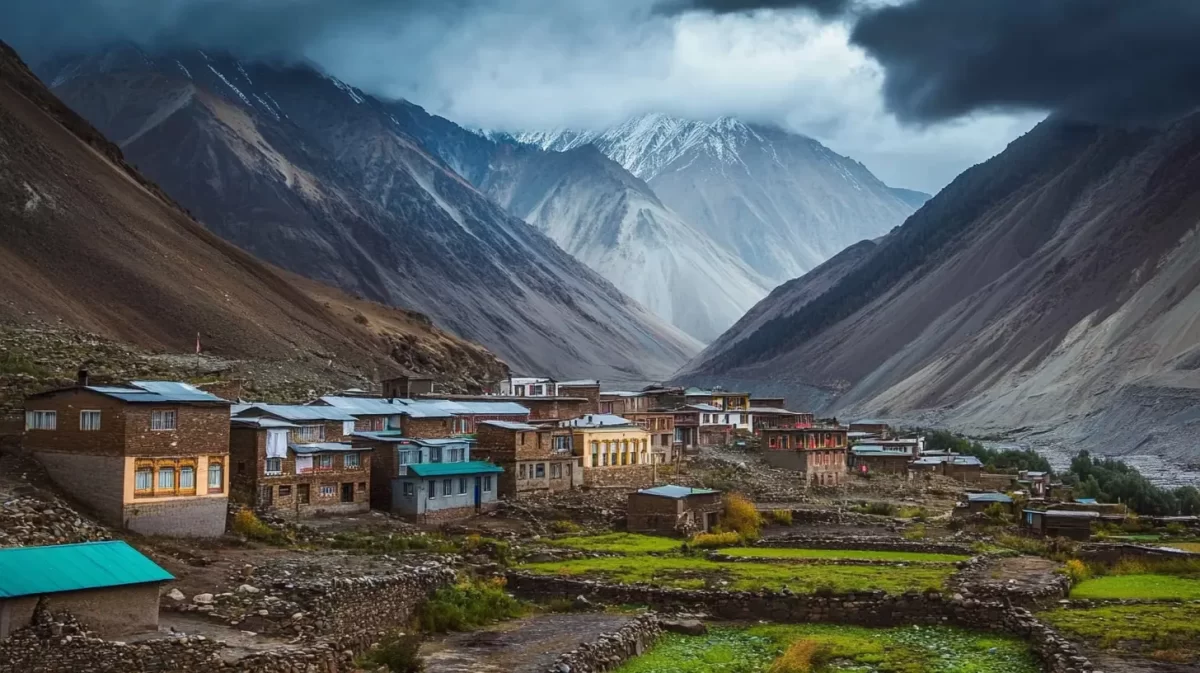
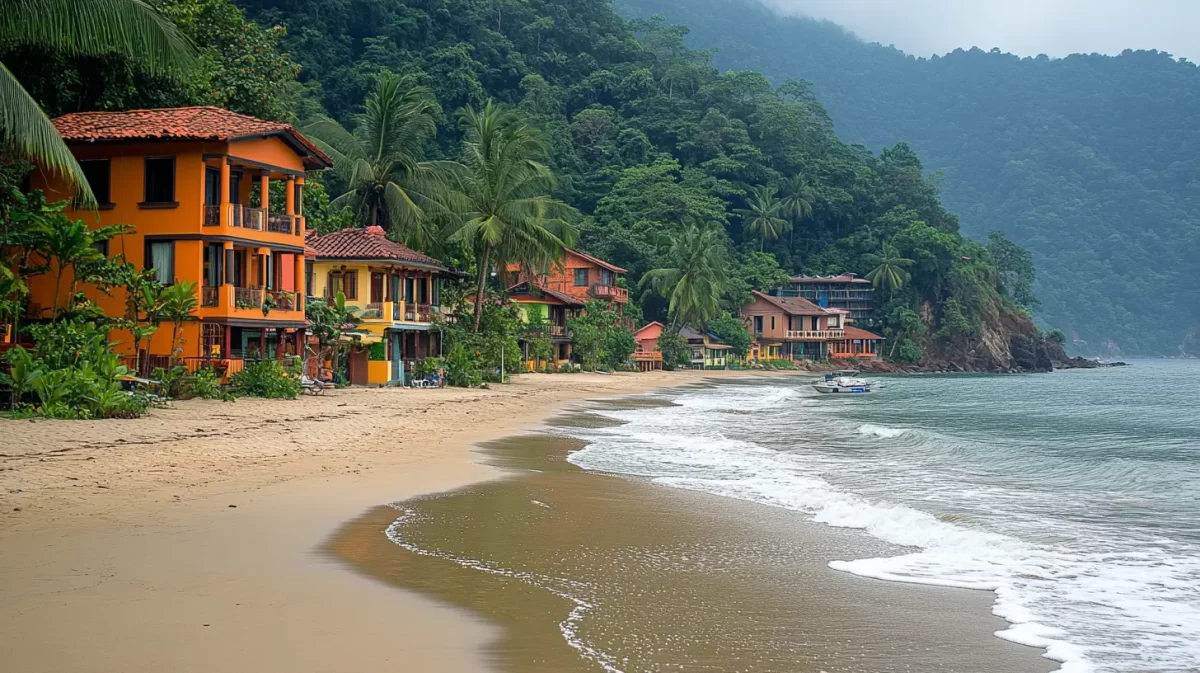
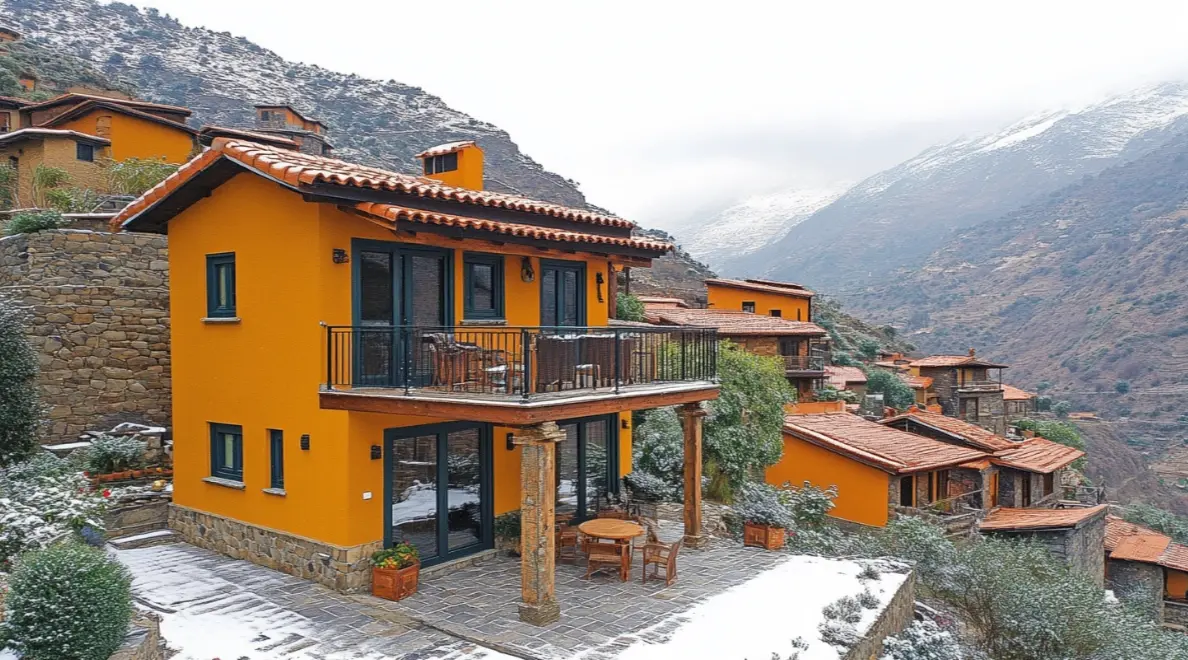

Rural villages and urban areas may face a variety of environments. Considering that these areas are relatively remote, if the network is affected by these environments, maintenance engineers will have to frequently visit the site for maintenance, making the entire project extremely troublesome and the maintenance cost high. The following situations encountered in the Edgeware project experience are worthy of special attention:
- Mountainous areas with frequent climate changes
Because these areas are in mountainous areas, the area changes frequently. Sometimes it rains and then it is sunny. These frequently changing weather conditions can easily cause more serious corrosion to the housing of network equipment systems than in normal climates.
- Areas near the sea
The air humidity in areas near the sea is very high, and the air also has a high salinity. This will accelerate the corrosion of network equipment.
- Low temperature areas
There are some areas with extremely low temperatures in winter. When the temperature is below -10℃, it will greatly affect the operation of the battery. As we mentioned before, these areas often do not have power grids and need to rely on solar systems to work. So how to keep the battery working properly in low temperatures in winter is crucial to the entire network system.
- High humidity areas
There are many areas with high humidity all year round. These areas face the same problems as coastal areas.
In short, the complex environment of rural areas has a great impact on the network system because of the long distance and high cost of station maintenance.
2.3 Rural Area ARPU too Low
The biggest problem in providing rural internet connection services to villages and towns in remote areas is that the population density in these areas is not high enough. If general telecom carriers are used to provide coverage services, the ARPU is too low to recover the cost. This is the biggest reason why many remote areas in many countries do not have network coverage. Some traditional methods have the defect of excessive CAPEX:
- Fiber Coverage
Fiber coverage is the most unrealistic coverage method because it requires huge investment to deploy fiber from fiber pop points in major cities to remote towns. These investments include infrastructure costs, fiber costs, and other expenses. However, the low population density in remote areas means that their income cannot cover the expenses.
- Macro 4G Node B
The coverage of Macro 4G Node B basestation is also undesirable because the deployment of macro 4G node B involves backhaul network design, base station tower construction, daily maintenance and other expenses, and the investment cost is too high.
- GPON
GPON coverage is essentially the same as fiber coverage, and there is also the problem of revenue not covering expenditure.
Therefore, the construction of village broadband connection and rural urban connection requires a simpler and lower-cost network architecture to adapt to the characteristics of the rural area.
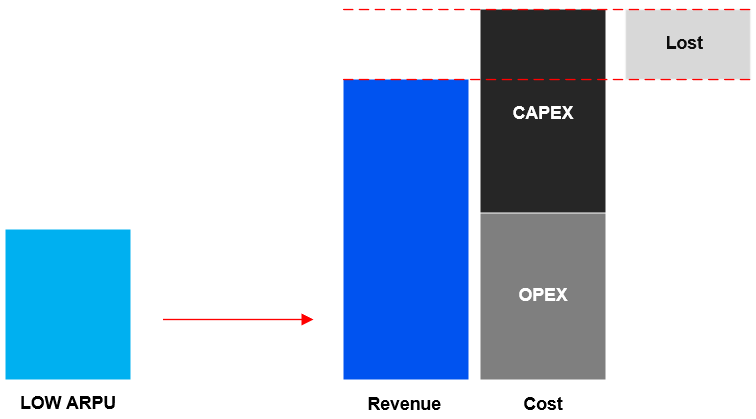
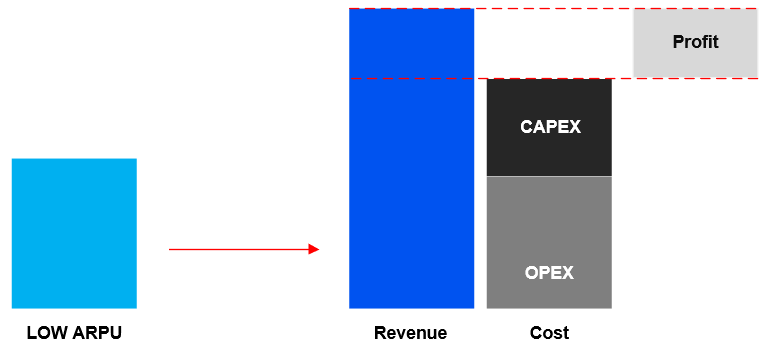
The comparison in the above figure actually reflects the essence of poor rural area coverage, that is, the low population density leads to low ARPU, and the corresponding telecom solution is built in the form of urban coverage, and its CAPEX and OPEX are too high, resulting in the entire network being unprofitable.
Therefore, the essence of rural area connections profitability is actually to use low-capacity coverage to reduce the OPEX and CAPEX of network construction, so that profitability can be achieved even in low ARPU scenarios.
2.Mikrotik Wireless P2P/P2MP Devices and Design Their Solar Site
3.1 Typical Models of Mikrotik Wireless P2P/P2MP Devices
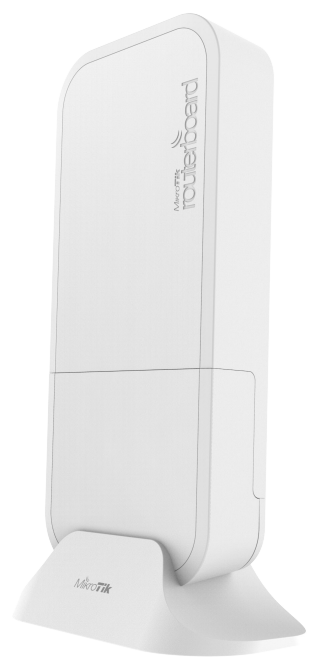
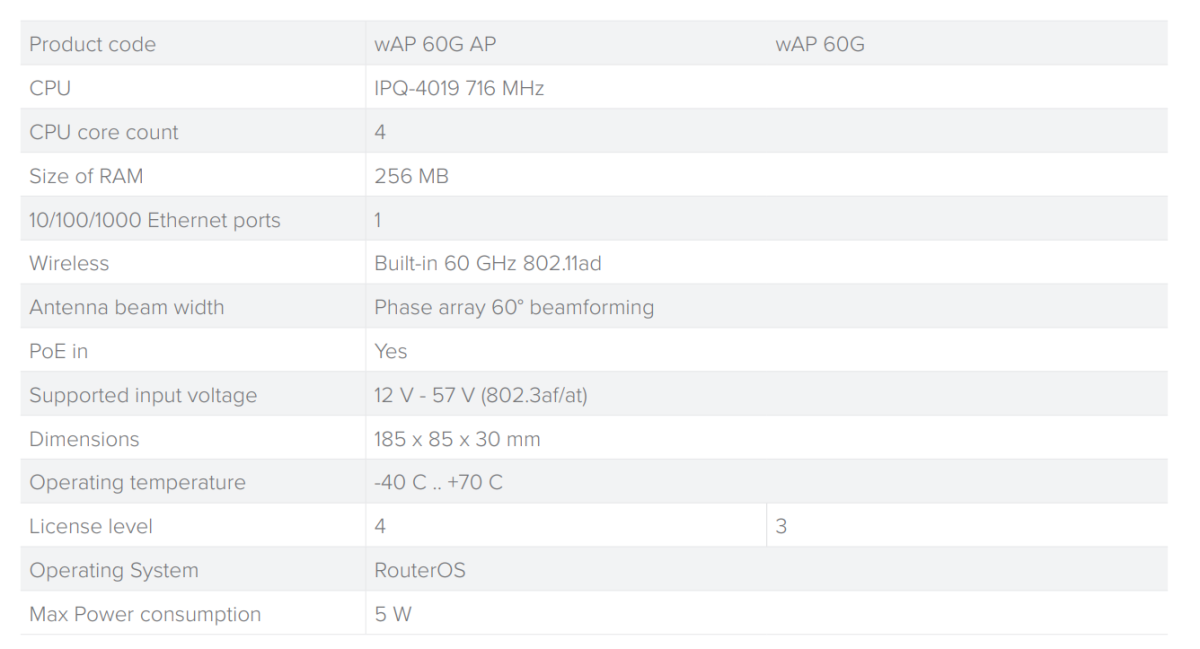
Mikrotik wAP 60G is a wireless P2P/P2MP device based on the 60GHz frequency band. We can see that its power consumption is 5W and can be powered by DC12V-DC57V or POE (802.3at/af). This is the core parameter we need to pay attention to when designing Solar for Mikrotik.
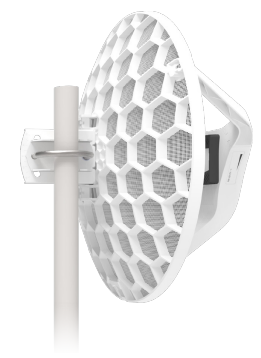
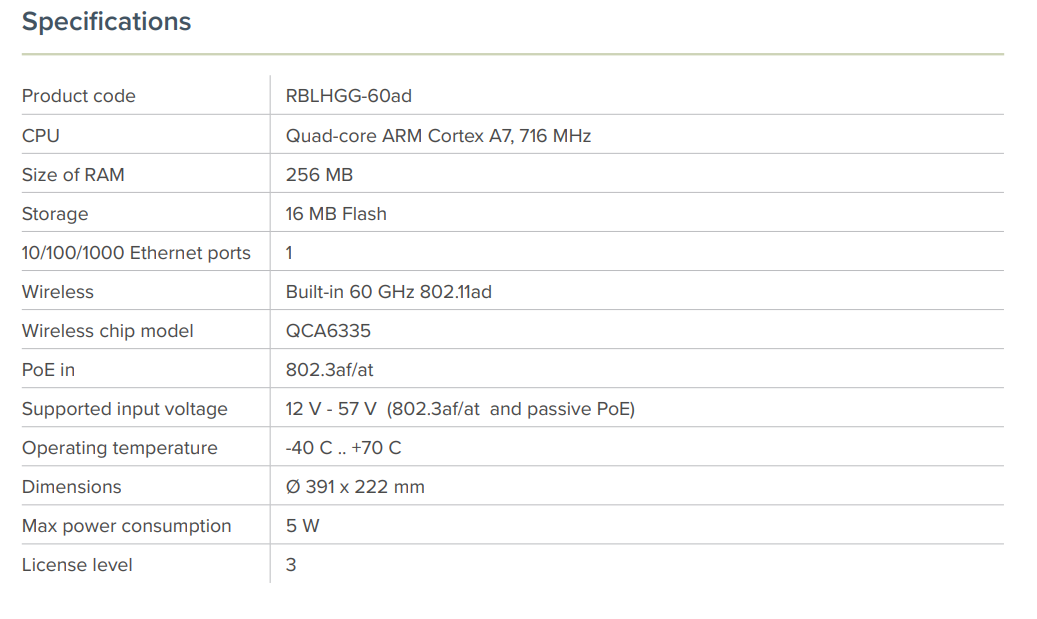
Mikrotik wAP 60G LHG is a wireless P2P device. Similarly, when designing the entire Mikrotik Solar system, we need to read its power supply method and power consumption. From the specification table, we can see that its power consumption is 5W, and its power supply method is POE or DC12V-57V.
Mikrotik has many models of wireless P2P/P2MP devices. When we design a mikrotik solar site, we need to pay attention to its power supply standard and power consumption.But we can find the common features of these devices are as follows:
(1) Power consumption is generally between 5-30W
(2) Generally uses POE/POE+ power supply
(3) Also provides DC power supply.
Please note that POE is recommended for power supply. Because DC power supply requires a network cable and a DC power cable when installing the device, which makes system installation more complicated. In addition, DC power supply has the risk of lightning protection and voltage drop. For this risk, please refer to the description of this article on this website: reference
3.2 Simplified Model to Build Mikrotik Solar Site
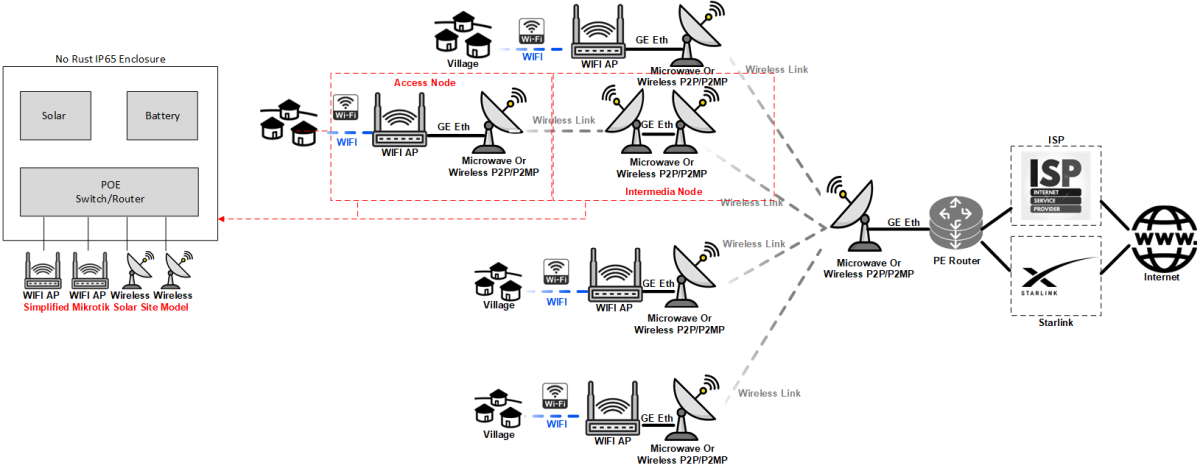
After summarizing the previous chapter, we found that to establish a supporting solar site for mikrotik wireless P2P/P2MP devices, the entire model can be simplified as shown above.
Solar Controller
A solar controller is required to provide stable, reliable and efficient solar energy for the entire system
Battery
The battery of the correct size needs to be designed and configured according to the power consumption of the site and the requirements of the system runtime. And we recommend the use of lithium batteries because of their high energy density and small volume and weight. The sites are generally located in remote areas, which can greatly reduce the difficulty of installation and transportation.
PoE Switch/Router
A PoE switch is required to power the mikrotik wireless P2P/P2MP devices through PoE, and at the same time realize the function of site traffic aggregation and forwarding.
Monitoring and management function (optional)
Please note that because the site is located in a remote area, the entire solar for mikrotik site design needs to consider the convenience of operation and maintenance and debugging in detail, so it is necessary to add complete remote monitoring and management to the entire system.
IP65 Ingress Protection and Rust-proof
As we described in Chapter 2.2 Challenges of Deployment in Rural Areas, due to the complexity and diversity of the environment in rural areas, special consideration needs to be given to how to improve the stability of equipment operation and prevent equipment from rusting. Therefore, we recommend using IP65 level ingress protection to completely isolate the external environment and use a completely rust-proof housing.
5.Edge Span S60 Series Solar for Mikrotik Solution
5.1 Overview of Edge Span S60 Mikrotik Solar System
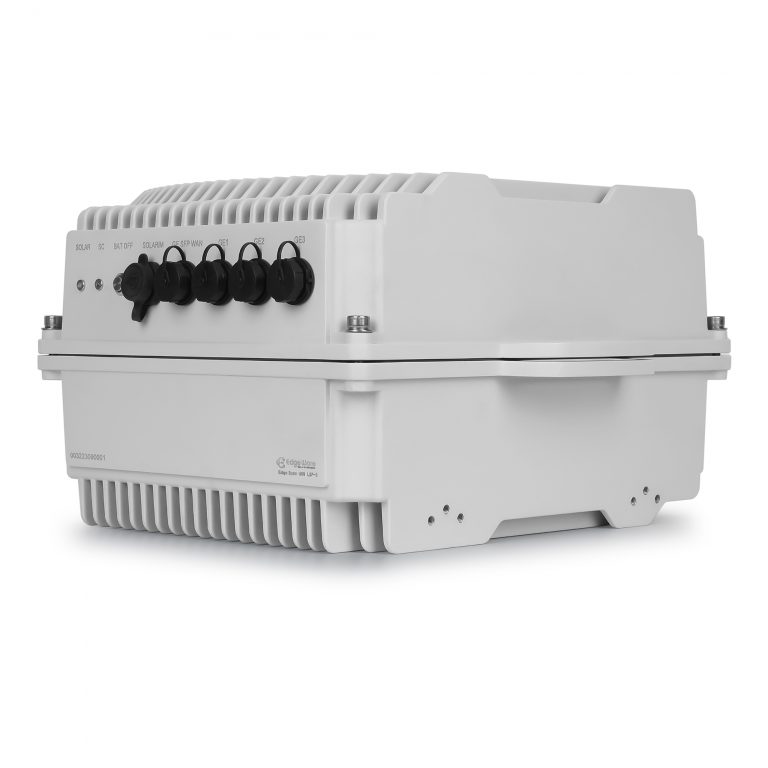
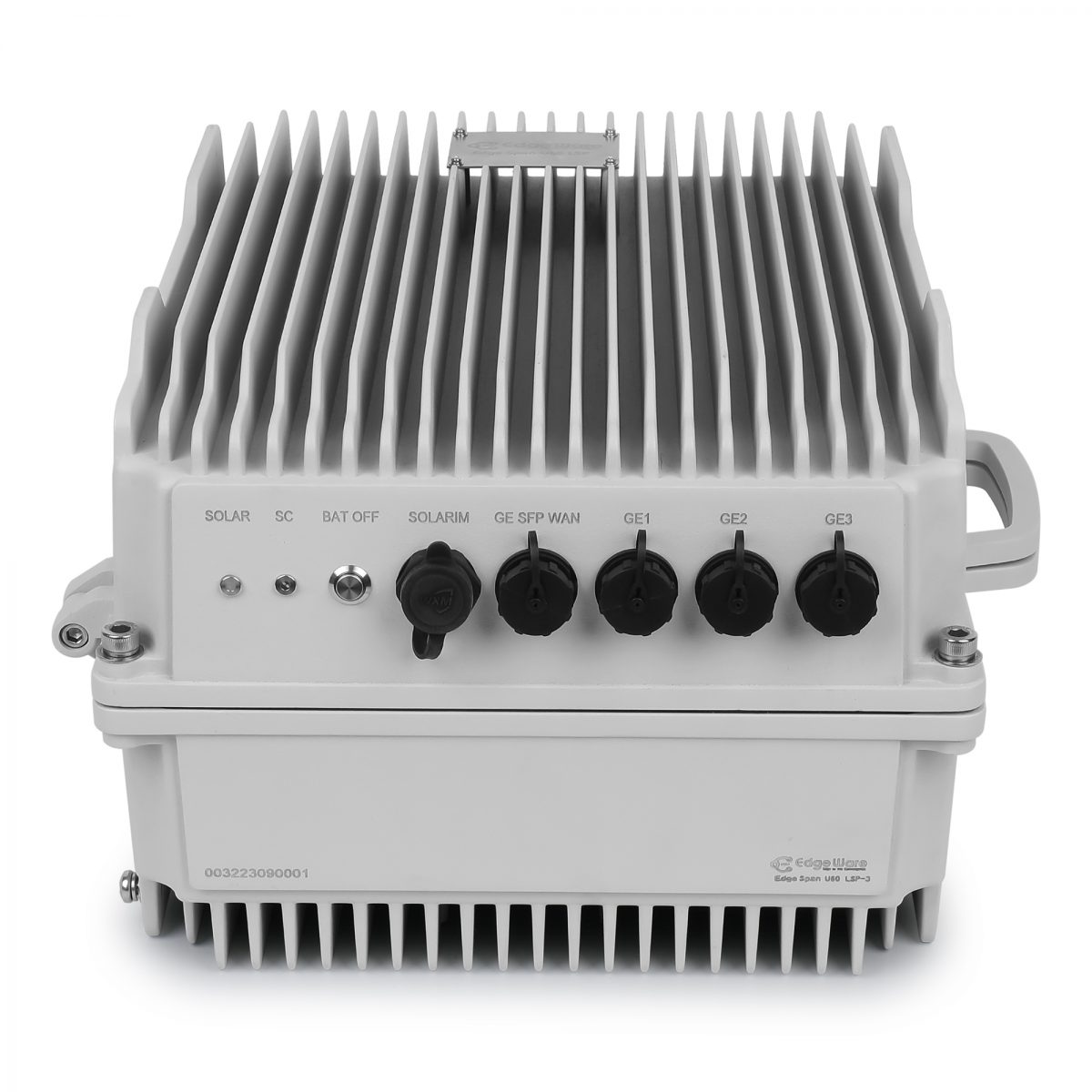
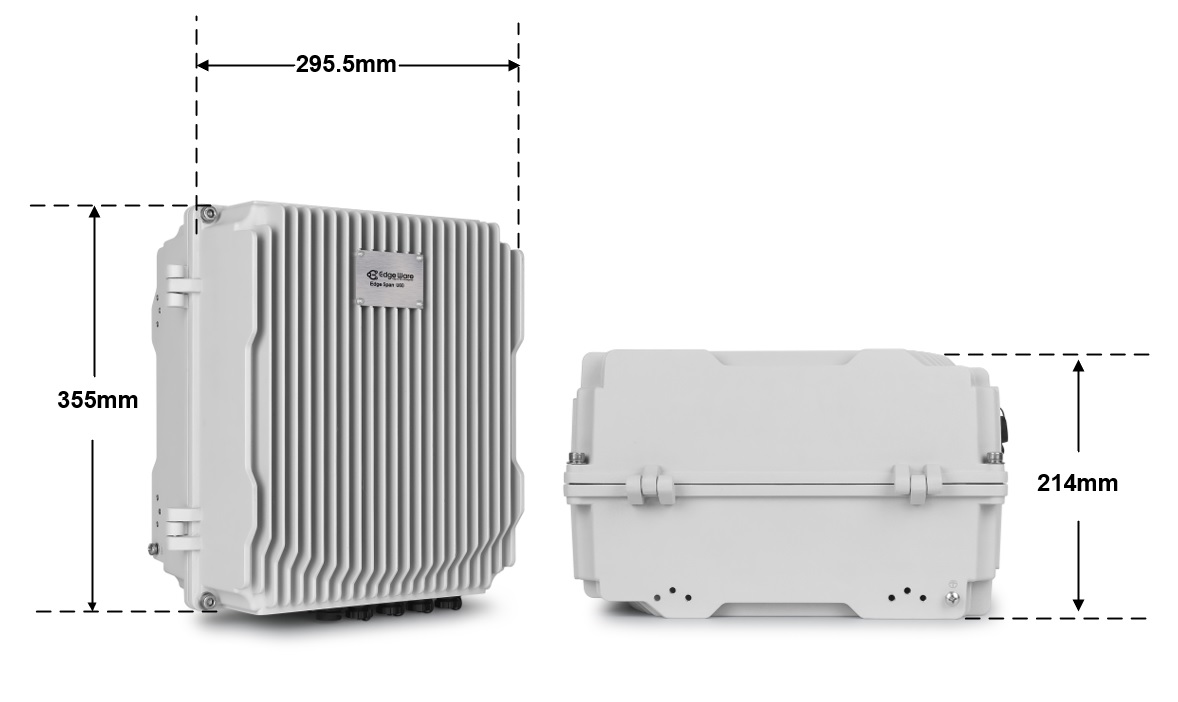
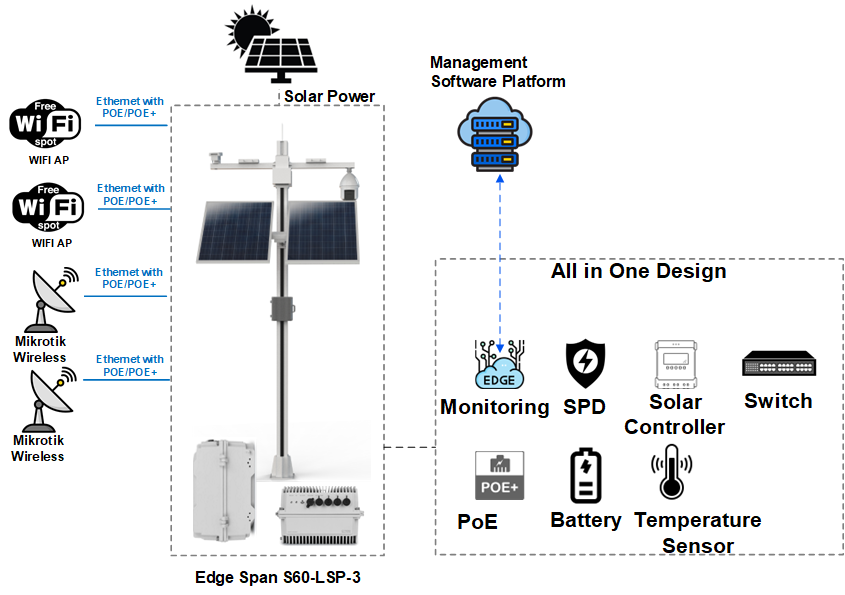
5.2 Features Designed for Reducing OPEX in Rural Area
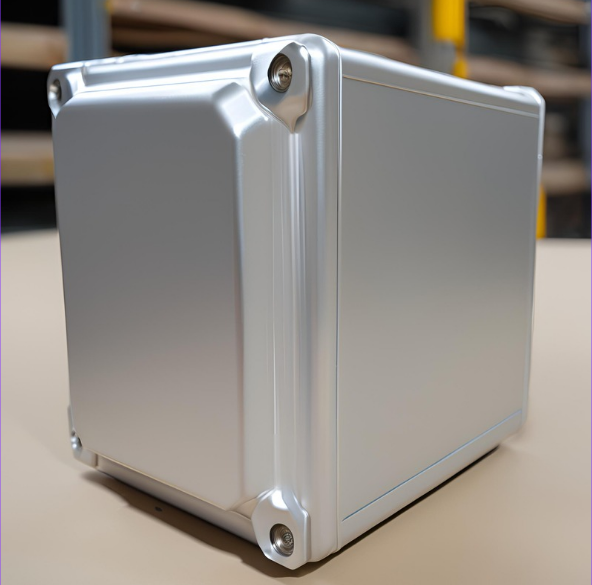
IP65/NEMA4X
The deployment scenario of Edge Span S60 is based on wireless P2P/P2MP. The deployment environment is generally harsh and on-site maintenance is difficult. Therefore, we designed the entire system to have an IP65/NEMA 4X protection level, thereby achieving long-term maintenance-free and greatly saving on-site maintenance costs.
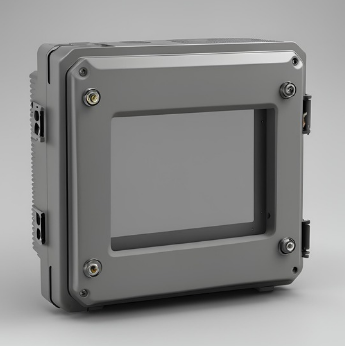
Outdoor Optimized Rugged Design
The Edge Span S60 solar is designed for the complex environment of mikrotik solar site. The whole system is based on a rugged design.

No Rust for Long Term Operation
The entire Edge Span S60-5GP system is built in a cast aluminum housing. Due to the advantages of the cast aluminum housing itself, the entire system is rust-proof. It is particularly suitable for deployment in extreme areas, such as forests, seaside, and high humidity areas.This can greatly reduce the operating costs of solar for mikrotik scenarios
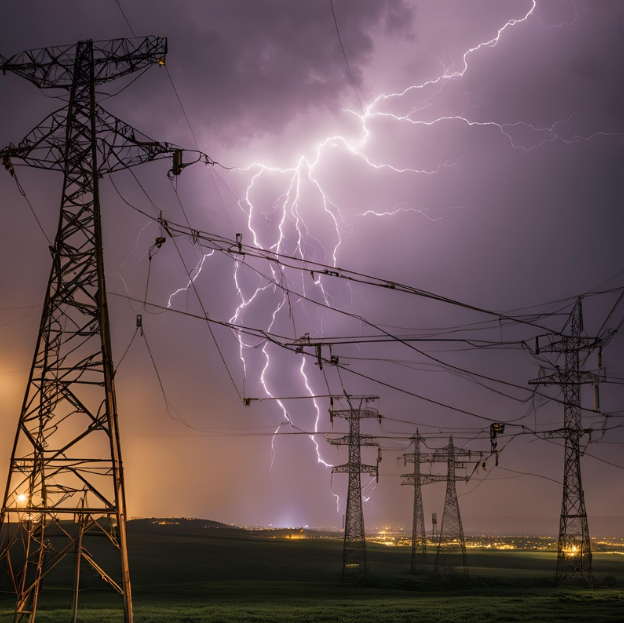
Surge Protection
Another major challenge in the outdoor environment is surge protection. To address this challenge, the Edge Span S60 has a complete grounding design. At the same time, a complete lightning protection system is designed for all device interfaces. The signal interface has a 6kV level lightning protection, while the power interface has a 20Ka level lightning protection.
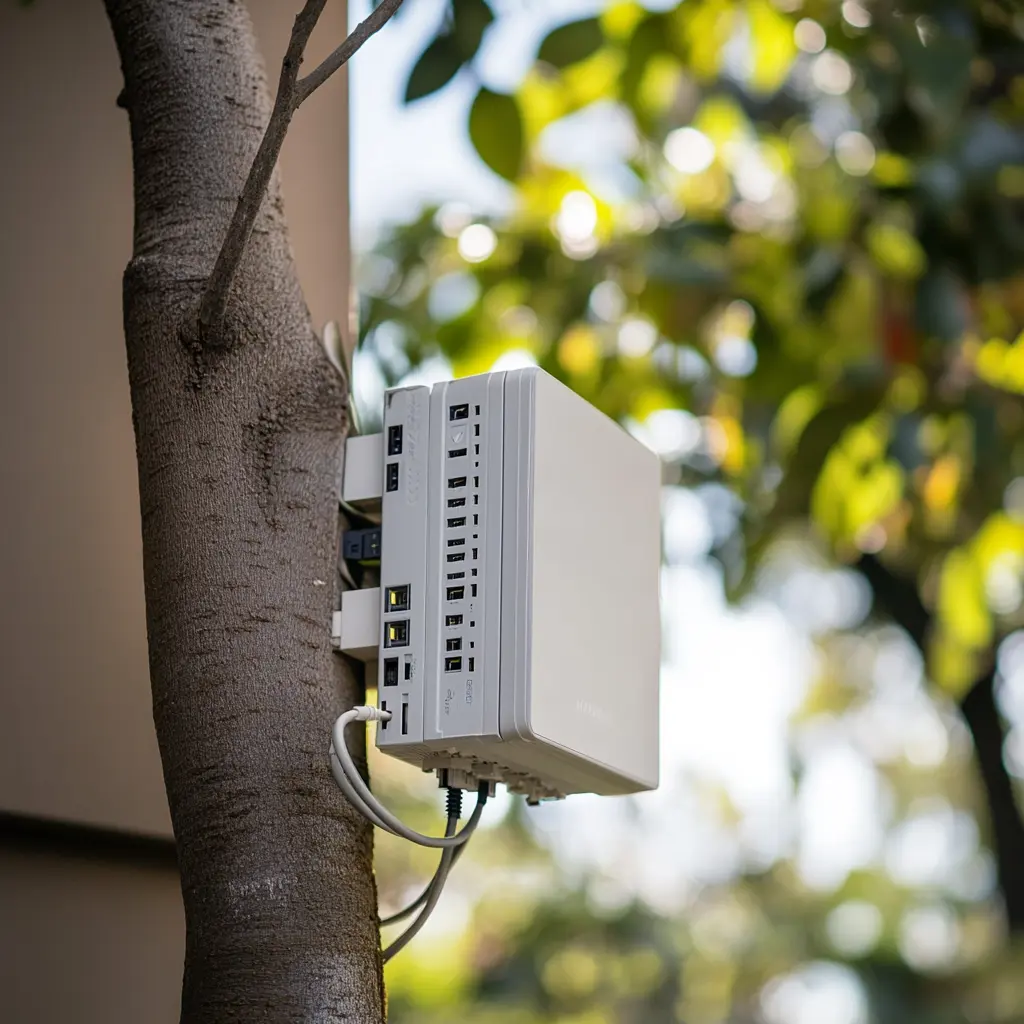
Complete POE+/POE++ Function
The typical configuration of Edge Span S60-5GP provides 3 802.3at (POE+) interfaces so that customers can power various WIFI APs, CCTV cameras and other devices at outdoor sites. For some special scenarios, 802.3bt (POE++) interfaces can be provided according to customer needs. We will recalculate the power budget of the entire solar battery enclosure based on the customer’s power so as to determine the final configuration plan with the customer.

Remote Monitoring and Management
When a site is working outdoors and is also a solar power based site, there are many things that the operation and maintenance personnel need to pay attention to. For example, the site is overcast and rainy for many days, causing the solar cells to run out, or the core equipment of the site is faulty. Edgeware provides a complete remote monitoring and management solution, allowing customers to know the overall operation and statistics of the site at the NOC.
5.Summary
In summary, there are many aspects to consider when building a mikrotik solar site, but the most important thing is to consider how to adopt a solution with high integration, low operation and maintenance costs, and low return sites. Edgeware’s Edge Span S60 series has multiple derivative models and rich experience in this scenario, which can provide customers with better solutions.

